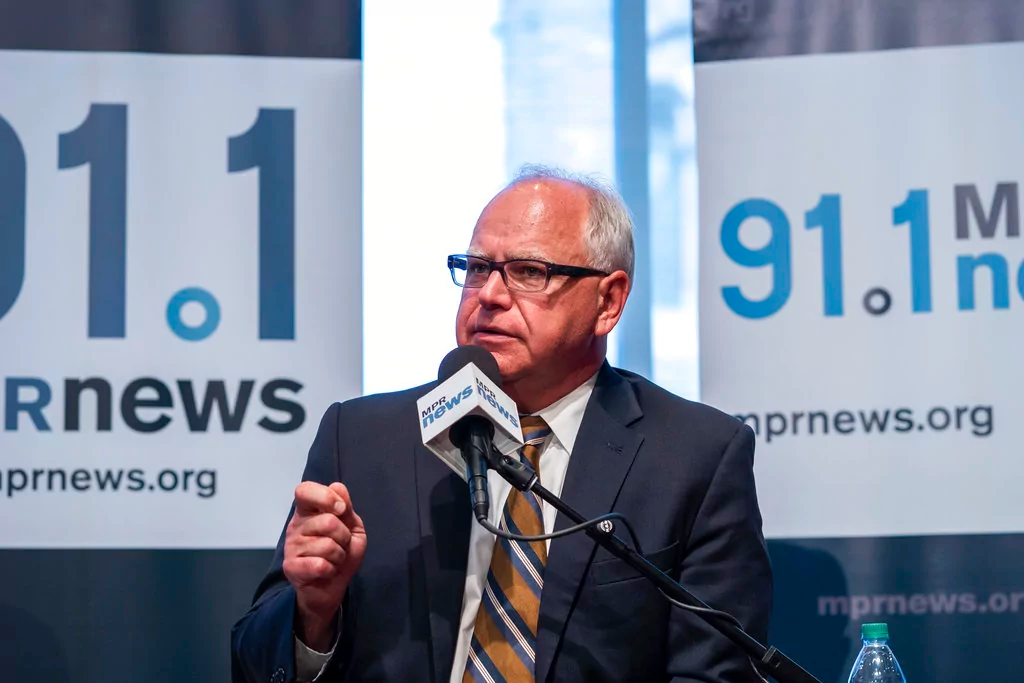Minnesota Governor Tim Walz, while serving in Congress, co-sponsored the DREAM Act, a bill that aimed to provide a pathway to citizenship for millions of illegal immigrants.
The legislation, introduced in 2017, would have allowed over three million undocumented individuals to secure green cards and eventually obtain U.S. citizenship.
While hailed by many as a humane approach to immigration reform, the Congressional Budget Office (CBO) revealed the financial impact of the bill, estimating a significant cost to American taxpayers over a decade.
The DREAM Act proposed by Walz and other lawmakers sparked considerable debate. It offered legal status to immigrants who had entered the country illegally as children, a demographic often referred to as “Dreamers.”
Though many considered the bill a moral imperative, aimed at helping young people who grew up in the U.S., the financial implications were substantial.
According to the CBO, the bill would have increased direct federal spending by nearly $27 billion between 2018 and 2027.
This sharp increase in spending came from a range of sources. The CBO’s analysis revealed that the DREAM Act would significantly increase expenditures on key federal programs such as Social Security and Medicare, which provide critical benefits to aging Americans.
The bill also would have imposed new costs on Medicaid, food stamps, and other public assistance programs that serve low-income families.
The CBO’s report specifically highlighted how these costs would accumulate. For example, higher education expenses funded by taxpayers would increase by $1 billion over the decade. \
Similarly, earned income tax credits and child tax credits for newly legalized individuals would increase spending by $5.5 billion.
Medicaid spending would surge by $5 billion, and food stamps (officially known as the Supplemental Nutrition Assistance Program or SNAP) would see a $2.3 billion rise. Meanwhile, Social Security spending would increase by $600 million, and Medicare by $300 million.
Perhaps most controversially, the DREAM Act would have allowed newly legalized immigrants to sponsor their foreign relatives for green cards under the family reunification policy, often referred to as “chain migration.”
The CBO flagged this provision as particularly impactful, noting that it would further strain social programs.
As immigrants sponsor their relatives, an ever-growing number of individuals would gain access to taxpayer-funded benefits, including Medicaid, Social Security, and Medicare, once they met the required number of years paying into payroll taxes.
The chain migration clause drew criticism from opponents, who argued that it would disproportionately burden America’s social safety nets, programs originally designed for American citizens.
As more immigrants became legal residents and naturalized citizens, the pool of individuals eligible for benefits would expand, adding billions to federal expenditures.
The CBO’s report on the DREAM Act made it clear: while the bill would indeed allow millions of undocumented individuals to achieve legal status, it came with a hefty price tag.
The report noted that the bill would add $25.9 billion to the federal budget deficit over the ten-year period. Of this, $30.6 billion would be in on-budget deficits, though some of this would be offset by an increase in off-budget revenues, such as Social Security taxes.
Walz’s backing of the DREAM Act wasn’t his only support for immigration reforms with financial consequences. During his time in Congress, he endorsed other measures aimed at providing amnesty to illegal immigrants.
One such bill aimed to grant green cards to individuals living in the U.S. under Temporary Protected Status (TPS), a designation often given to migrants from countries experiencing severe hardships like natural disasters or conflict.
Another proposal Walz supported would have offered green cards to immigrants who joined the U.S. military.
While these proposals underscored Walz’s commitment to comprehensive immigration reform, they also highlighted the financial challenges associated with such policies.
Critics of the DREAM Act and similar bills argued that the U.S. should focus on securing its borders and enforcing existing immigration laws before offering amnesty to millions of undocumented individuals.
As the nation continues to grapple with the complexities of immigration, the debate over the DREAM Act and its financial implications remains a key issue.
Supporters argue that legalizing Dreamers is a moral necessity, while opponents warn that doing so could place an unsustainable burden on taxpayers.
With the 2024 elections approaching, the question of how to balance compassion with fiscal responsibility will likely remain a central topic in the national conversation.

If Democrats want a Dream act why don’t the millionaire Democrats fund it out of their bulging pockets from the money that they have fleeced from Americans